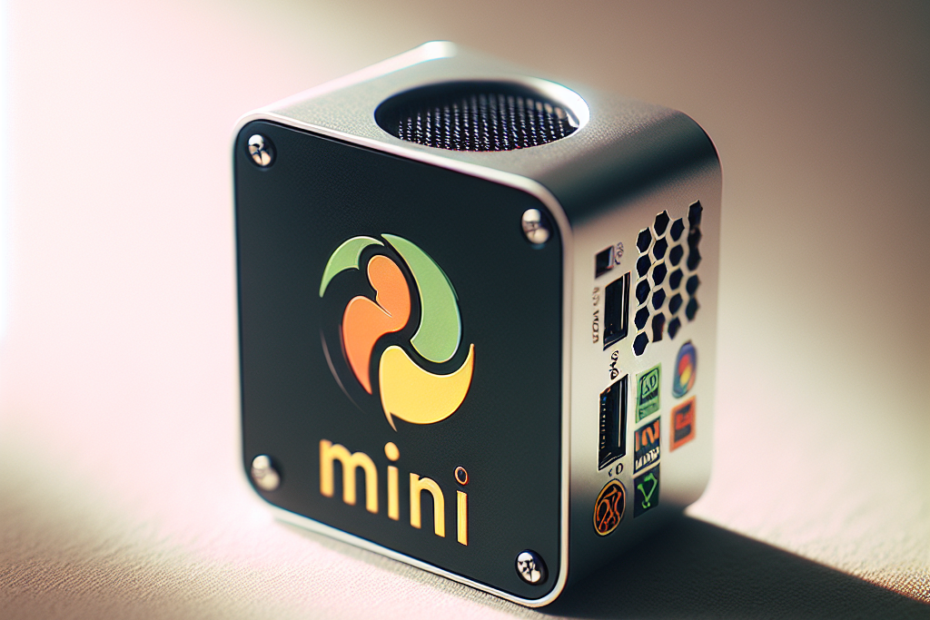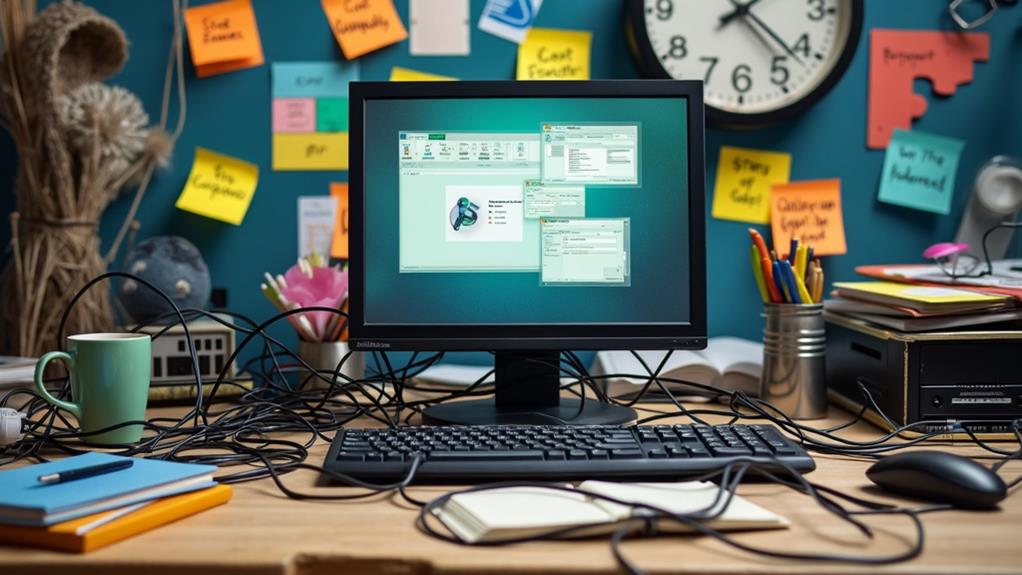



Have you ever wondered if it’s possible to install Linux on a mini PC? Well, the good news is that you can! Mini PCs have gained popularity in recent years due to their compact size and versatility, and Linux enthusiasts have found a way to bring their favorite operating system to these small devices. In this article, we will explore the process of installing Linux on a mini PC and discuss the benefits it can offer. So, if you’re curious about unleashing the power of Linux on a mini PC, read on to find out more! Yes, you certainly can install Linux on a mini PC! In fact, Linux is a perfect choice for mini PCs due to its lightweight nature, flexibility, and vast customization options. In this article, we will explore the requirements, steps, and benefits of installing Linux on a mini PC. We will also discuss common issues that may arise during the installation process, as well as tips for optimizing the performance of Linux on your mini PC. So, let’s dive in and get started!
Requirements for Installing Linux on a Mini PC
Before diving into the installation process, let’s first take a look at the specifications your mini PC should meet for a smooth Linux experience. While the specific requirements may vary depending on the Linux distribution you choose, here are some general guidelines to consider:
Mini PC Specifications
- Processor: Preferably dual-core or higher
- RAM: At least 2GB, though 4GB or more is recommended
- Storage: Sufficient storage space for the Linux distribution, applications, and files
- Display: A compatible display with a minimum resolution of 1024×768
- Input devices: Keyboard and mouse or a touch screen for navigation
- Internet connectivity: Ethernet or Wi-Fi for downloading Linux ISO files and updates
Linux Distribution Options
When it comes to choosing a Linux distribution for your mini PC, you have a wide range of options available. Some popular distributions that are lightweight and well-suited for mini PCs include:
- Ubuntu MATE: A user-friendly distribution that is known for its lightweight and efficient performance.
- Xubuntu: Based on the popular Ubuntu distribution, Xubuntu features the lightweight Xfce desktop environment, making it an excellent choice for mini PCs.
- Lubuntu: Another Ubuntu-based distribution, Lubuntu utilizes the LXQt desktop environment, which requires minimal system resources.
- Linux Mint XFCE: A user-friendly distribution that uses the lightweight XFCE desktop environment, making it a good choice for mini PCs.
Each distribution has its own strengths and features, so make sure to choose one that aligns with your preferences and requirements.
Data Backup
Before proceeding with the Linux installation, it is highly recommended to back up any important data on your mini PC. Although the installation process generally does not cause data loss, it is always better to be safe than sorry. You can back up your data to an external storage device or use cloud-based services for added convenience and security. By taking this step, you can have peace of mind knowing that your valuable information is protected.
Preparing Your Mini PC for Linux Installation
Now that you have ensured that your mini PC meets the necessary specifications and have chosen a Linux distribution, it’s time to prepare your mini PC for the installation process. Here are a couple of important steps to take:
Checking BIOS Settings
Before installing Linux, it is important to check and adjust your mini PC’s BIOS settings. The BIOS (Basic Input Output System) is responsible for initializing hardware components and loading the operating system. Accessing the BIOS varies depending on the manufacturer and model of your mini PC. Generally, you need to press a specific key (often F2, F10, or Del) repeatedly during the boot process to enter the BIOS settings. Once inside the BIOS, you may need to change the boot order to prioritize the USB drive or DVD drive, depending on how you plan to install Linux.
Creating Bootable USB Drive
To install Linux on your mini PC, you will need a bootable USB drive containing the Linux distribution of your choice. Creating a bootable USB drive is a straightforward process, and there are several tools available to help you accomplish this. One popular tool is Rufus, which is available for both Windows and Linux systems. Simply download Rufus, insert your USB drive, select the Linux ISO file, and let Rufus do the rest. Once the USB drive is ready, restart your mini PC and boot from the USB drive to begin the installation process.
Installing Linux on a Mini PC
With your mini PC prepared and ready, it’s time to install Linux. The installation process may vary slightly depending on the Linux distribution you choose, but the following steps generally apply:
Choosing Installation Method
When booting from the USB drive, you will be presented with various installation options. Choose the “Install” or “Install Linux” option to begin the installation process.
Partitioning Hard Drive
During the installation, you will be prompted to partition the hard drive. If you are installing Linux as the sole operating system on your mini PC, you can choose the default partitioning option. However, if you plan to dual boot with an existing operating system, you will need to manually partition the hard drive to allocate space for both systems.
Selecting Linux Distribution
Next, you will be prompted to choose the Linux distribution you want to install. Select the distribution you downloaded earlier and proceed with the installation.
Following Installation Steps
Follow the on-screen prompts to customize the installation process according to your preferences. You may be asked to choose the installation language, set up a username and password, and select additional software packages. Once you have made these selections, the installation process will begin. This may take some time, so sit back and relax while Linux is being installed on your mini PC.
Dual Booting Linux with Existing Operating System
If you already have an operating system installed on your mini PC and want to dual boot with Linux, there are a few additional considerations to keep in mind. Here’s what you need to know:
Checking Compatibility
Before proceeding with the installation, ensure that your mini PC supports dual booting. Some older or less flexible systems may not support this option. Additionally, check the compatibility of your mini PC with the specific Linux distribution you plan to install to minimize any potential compatibility issues.
Understanding Boot Loader
When dual booting, the boot loader is responsible for presenting the option to choose between your existing operating system and Linux during startup. Linux distributions typically use either GRUB or LILO as the boot loader. It’s important to understand how the boot loader works and how to configure it properly for seamless dual boot functionality.
Resizing Partitions
To make room for Linux alongside your existing operating system, you will need to resize your current partitions. This can be done using partitioning tools such as GParted or Disk Management (Windows). It’s important to back up your data before resizing partitions to minimize the risk of data loss. Once you have resized the partitions, proceed with the Linux installation as outlined earlier.
Common Issues and Troubleshooting
During the installation and subsequent use of Linux on your mini PC, you may encounter some common issues. Here are a few troubleshooting tips for these situations:
Driver Compatibility
One common issue is driver compatibility. Linux distributions generally come with a wide range of drivers, but some specific hardware components may require additional drivers to function properly. If you are experiencing issues with certain hardware, try searching for and installing the appropriate drivers for your mini PC.
Wireless Network Configuration
Another common issue is wireless network configuration. While most mini PCs come with built-in Wi-Fi, certain distributions may require additional steps to establish a wireless connection. Make sure that the necessary drivers for your wireless card are installed and configure the network settings accordingly.
Sound and Graphics Issues
Occasionally, you may encounter sound or graphics issues after installing Linux. This can often be resolved by installing the appropriate sound or graphics drivers for your mini PC. If the issue persists, you can seek help from online forums and communities dedicated to your specific Linux distribution for further troubleshooting steps.
Optimizing Linux for Mini PC
Once Linux is installed on your mini PC, you can take steps to optimize its performance and ensure a smooth user experience. Here are a few tips to help you get the most out of your mini PC:
Choosing Lightweight Desktop Environments
Mini PCs often have limited system resources, so choosing a lightweight desktop environment can greatly enhance performance. Desktop environments such as Xfce, LXQt, and MATE are known for their minimal resource usage, making them ideal choices for mini PCs.
Disabling Unnecessary Services
By disabling unnecessary services and startup applications, you can free up system resources and improve overall performance. Identify any services or applications that are not essential to your daily usage and disable them through the system settings or the command line.
Optimizing Power Management
To maximize battery life on your mini PC, optimize the power management settings. Adjust the screen brightness, enable power-saving features, and configure suspend and hibernation settings to strike a balance between performance and power consumption.
Managing Software and Updates
Once you have installed Linux on your mini PC, it’s essential to keep your system up to date and manage software installations. Here are a few key points to remember:
Package Managers
Linux distributions use package managers to handle software installations, updates, and removals. Familiarize yourself with the package manager of your chosen distribution (e.g., APT for Ubuntu-based distributions, DNF for Fedora-based distributions) to efficiently manage software packages.
Installing Additional Software
Explore the software repositories of your Linux distribution to discover and install additional software packages. Most distributions come with a wide range of pre-installed applications, but you can further customize your mini PC by installing software that meets your specific needs.
Keeping the System Up to Date
Regularly updating your Linux system ensures that you have the latest security patches, bug fixes, and performance improvements. Set up automatic updates or manually check for updates on a regular basis to keep your mini PC secure and running smoothly.
Security Considerations
Linux is known for its robust security features, but it’s still important to take steps to safeguard your mini PC. Here are a few security considerations:
Choosing a Secure Linux Distribution
When selecting a Linux distribution for your mini PC, consider choosing one that emphasizes security features and has a strong track record of regular security updates. Researching the security features and reputation of different distributions can help you make an informed decision.
Enabling Firewall and Antivirus
While Linux systems are generally less susceptible to malware compared to other operating systems, it is still important to enable the built-in firewall and consider installing antivirus software for an added layer of protection.
Regular System Maintenance
Performing regular system maintenance tasks, such as installing updates, scanning for malware, and monitoring system logs, can help identify and address any potential security issues before they escalate. Develop a routine maintenance schedule to keep your mini PC in top security condition.
Benefits of Linux on a Mini PC
Now that we have covered the installation, troubleshooting, and optimization aspects of Linux on a mini PC, let’s explore some of the key benefits you can expect from this setup:
Lightweight Operating System
Linux distributions are renowned for their lightweight nature and efficient resource utilization. When installed on a mini PC, Linux allows for smoother performance and quicker response times compared to resource-heavy operating systems.
Customization and Open Source
Linux offers unparalleled customization options, allowing users to tailor their mini PC’s desktop environment, themes, and software packages according to their preferences. Additionally, being an open-source platform, Linux provides a transparent and collaborative ecosystem that fosters innovation and community support.
Community Support
One of the greatest advantages of using Linux on a mini PC is the vast community support available. Whether you need help troubleshooting a problem or want to explore new features and applications, there are numerous forums, online communities, and tutorials dedicated to Linux that can assist you every step of the way.
Alternative Options for Mini PC Users
While Linux is a popular choice for mini PCs, it’s important to consider alternative options to meet your specific needs. Here are a few alternatives worth exploring:
Cloud-Based Solutions
If you primarily rely on cloud-based applications and storage, you may find that a cloud-based solution, such as Chrome OS or a thin client setup, suits your needs better than a traditional operating system.
Other Operating Systems
While Linux offers flexibility and customization, other operating systems like Windows or macOS may be better suited for certain use cases or software compatibility requirements. If you have specific software dependencies or prefer the ecosystem offered by these operating systems, consider exploring them as alternatives.
Virtualization
Virtualization provides the ability to run multiple operating systems simultaneously on a single hardware platform. Using virtualization software such as VirtualBox or VMware, you can create virtual machines to run Linux alongside other operating systems, offering flexibility and the ability to switch between them as needed.
In conclusion, installing Linux on a mini PC opens up a world of possibilities, combining the flexibility and customization of Linux with the small form factor and energy efficiency of mini PCs. By following the requirements, preparing your mini PC, and meticulously going through the installation steps, you can enjoy a lightweight and fully functional Linux environment on your mini PC. With community support, optimization techniques, and security considerations in mind, Linux can become your ideal operating system for your mini PC, providing a seamless and personalized computing experience.
Disclosure: As an Amazon Associate, I earn from qualifying purchases.





